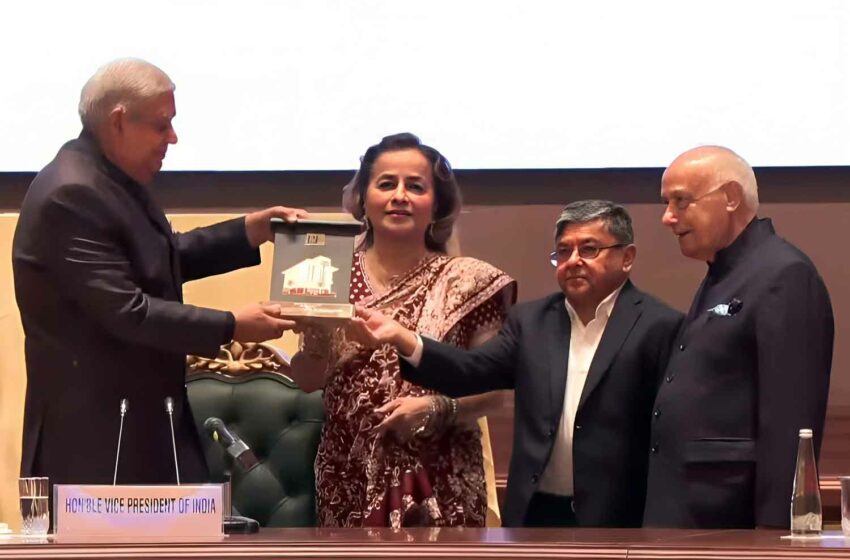How India came to deny consumers legal access to safer ways of consuming nicotine.
By Samrat Chowdhery
India’s ban on commercialization of electronic nicotine-delivery systems (ENDS) in 2019 was the blunt political end to a meandering administrative and legal process that began after the World Health Organization Framework Convention on Tobacco Control (FCTC) stated of ENDS in a report presented at its sixth general body meeting held in Moscow in 2014: “while medicinal use of nicotine is a public health option under the treaty, recreational use is not.”
This early denial of harm reduction principles and mistaking product evolution and substitution for market expansion by the tobacco industry led many developing nations to begin formulating policies to ban e-cigarettes even as they were undergoing rapid development by small-scale Chinese producers—becoming safer, affordable and more effective in helping smokers switch.
In India, the then Union health minister, Harsh Vardhan, who was well-steeped in the WHO mindset through his earlier work in establishing smoke-free public spaces policies in the 1990s as a state health minister, formed committees soon after the FCTC meeting to evaluate the impact of e-cigarettes. Staffed with experts from the same WHO-linked tobacco control ecosystem, the committees recommended a complete ban. Notably, another panel formed by the commerce ministry to study ENDS favored the regulatory approach but was overlooked.
In an unexpected twist, the health minister was thereafter reshuffled to another ministry in late 2014, and the issue remained on the backburner until 2019 under the incumbent, although a slow-paced administrative and legal battle continued. The health ministry, through various regulatory bodies, tried to outlaw e-cigarettes, first by claiming they contain nicotine, which requires these products to gain medical approval, and thereafter by stating nicotine is governed by the Poisons Act, which forbids its sale as a consumer product. Both claims were shot down by courts that consistently indicated favor toward the regulatory pathway.
This deadlock continued until Vardhan was reappointed health minister when his party swept back to power in mid-2019 with an absolute majority. Strengthening his hand was a perfect storm. A major push to ban vaping was being led by tobacco control nonprofits linked to funding from Bloomberg Philanthropies. Among them were The Union, the Campaign for Tobacco-Free Kids (CTFK) and Vital Strategies, which had been lobbying state governments to ban e-cigarettes. With the central government now on board, the wave became a tsunami, and soon, over 15 Indian states had declared a ban on vapor products.
An underlying economic factor could also be that U.S. e-cigarette maker Juul, which had captured 70 percent of U.S. market share in under two years, announced its entry into India earlier that year, spooking the Indian tobacco industry, which until then had made little effort to develop vapor products, perhaps because the regulatory cloud cast on them since 2014 made long-term investment a risky proposition. Data revealed recently through a Supreme Court directive shows that India’s dominant tobacco company, ITC, donated upward of $11 million to the ruling dispensation a few months before the vape ban. However, it is unclear if this was to influence the ban, to favor or oppose it, or if it was part of election-time funding corporations often provide.
Nevertheless, the insistence by Juul, which publicly led the pro-vaping side, on relying on foreign experts who did not well understand the complex and opaque Indian tobacco ecosystem; lack of homegrown research and tobacco cessation researchers who could have countered the anti-vaping narrative from the local network developed by Bloomberg-funded nonprofits; as well as the absence of the local tobacco industry from the debate were all contributing factors.
What followed in rapid succession was to counter the opposition from courts by first banning research into e-cigarettes, followed by a “white paper” by the country’s top government-controlled research body, which cherry-picked research to make a case for a complete ban. This became the basis for an executive order prohibiting the sale of e-cigarettes and heated-tobacco devices, which, breaking from tradition, was announced by the finance minister. Stocks of Indian tobacco companies spiked after the news.
The bill was debated in Parliament a few months later, where after a lengthy but low-quality debate as many politicians admitted they had not seen these devices and despite allegations of favoring the local tobacco industry and over 60 specific objections to the law, it was passed by brute majority. Vardhan was honored by the WHO with its top award for implementing the e-cigarette ban while The Union and the CTFK congratulated the Indian government along with claiming credit for the legislation. It was win-win for all, those selling tobacco and the ones opposing them, except the over 100 million smokers who had been denied legal access to safer ways of consuming nicotine, as well as the independent e-cigarette vendors, most of whom moved shop to Dubai when a Juul-led court challenge to the ban failed to bring relief.













